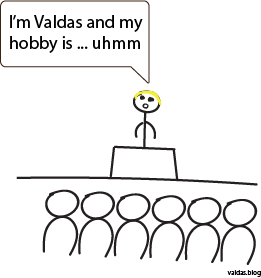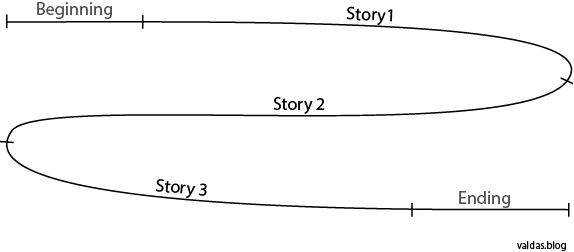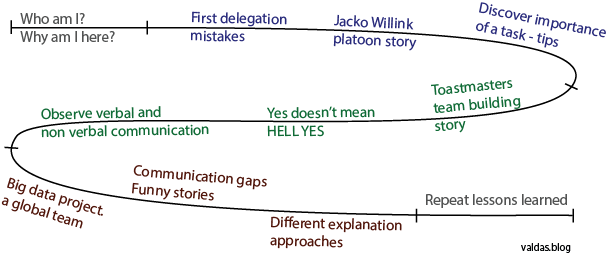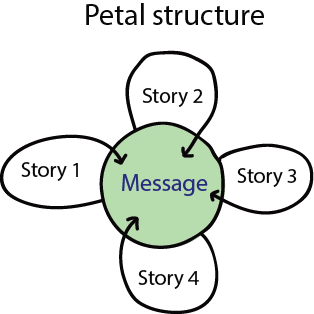
Nobody would argue that experiencing a memory blackout on a stage is horrifying. All of a sudden you can’t get a word out, the brain gets unplugged, and your shame level rises sharply - the situation no one wants to encounter. Public speaking is a stressful situation, and memory glitches shouldn’t surprise anyone. Hence, learning the text by heart is not the best strategy. Here is one technique I find useful.
Remembering bullet point arguments and long texts is a nightmare for me. It takes ages to memorize, and I still get distracted easily. My brain gets occupied densely by text recalling, and it focuses on the next words and sentences, which may lead to funny situations, as illustrated in the drawing below:

The evidence suggests that human brain prefers visuals over text. I am not an exception: a funny picture or an interesting visual will stick in my crazy mind way longer than written text. Therefore, to use the full potential of our brains, we need to visualize arguments and make connections between them. Visualization can be as simple as a little curve:

Either I am about to speak at a conference or give a presentation at work, I start my preparations by drawing a very similar timeline of my speech. So how to create it? Let’s dive into an example from my latest talk at Vilnius Tech Leads about (my delegation lessons). I start my preparations by refining stories and putting those on a timeline. For the sake of simplicity, I am keeping the diagram simple here, but usually it evolves, I put more and more details, play with the order, and eventually, I have to redraw it several times to make it clean and tidy. To make it easier to remember, I might put some visuals near each story.

The story timeline is a framework that works very well for me. There are a couple of reasons why I do it before every talk:
- visualize arguments and focus on the central message
- plan and control the length of a discussion
- remember exactly what goes after what
- smooth transitions
- remind yourself about the flow with a blink of an eye
I learned this trick at Toastmasters, which is a global nonprofit public speaking and leadership organization designed to make public speaking less terrifying. I learned many valuable lessons there - the most valuable of which was the importance of structure - to prepare content faster and present it appropriately. Structure of a speech helps an audience to understand the message. But it doesn’t need to be a boring curve; instead, you might use different visualization methods.

The sparklines structure contrast our ordinary world with an ideal, improved world. It creates and fuels a desire for change.

The petal structure organizes multiple stories around one core concept. It’s useful if you have several unconnected stories you want to tell or things you want to reveal – that all relate back to a single message.
A human brain is a sophisticated processor. If you are interested in learning more about memory tricks, search for memory palace technique. Here is a TED talk by Joshua Foer, who is “a science writer who ‘accidentally’ won the U.S. Memory Championship”.
Remembering word by word is time-consuming. If you are about to talk at a TED conference, you should learn the text by heart. Otherwise, use simple tricks to clarify the message, structure and memorize only the essential points.
